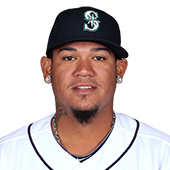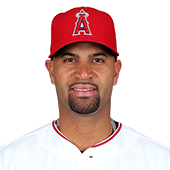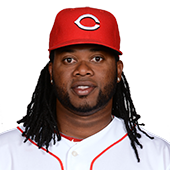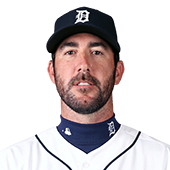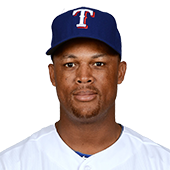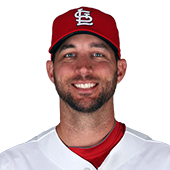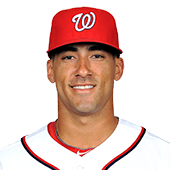2016 Fantasy Baseball Draft Prep: Rating aging stars, assessing risks – CBSSports.com
The “Is David Ortiz washed up?’ stories are an annual tradition. Because Ortiz’s career peak came relatively late and his game is exclusively predicated on the ability to hit the ball hard, we’re constantly on the lookout for the end, and have been for years. Every 0-for-4 performance in April brings about an avalanche of “IS DAVID ORTIZ WASHED UP” histrionics, and every year, he just keeps hitting.
I fell for it last summer, admittedly. Ortiz was hitting .219/.298/.375 through the first week of June, and was especially having trouble with left-handed pitchers. Ortiz, of course, insisted that any suggestion he was “washed up” was ridiculous, and he, of course, went on to hit .304/.394/.655 from June 9 on. He was, as always, correct.
At some point, Ortiz will hit the wall, and our hand-wringing over his eventual decline will be worth something. Father Time is undefeated, and every player eventually reaches a point where he can’t keep outrunning his decline. The question you have to ask yourself is, how can you tell when it is just a slump or if it is the start of something real and concerning.
With Ortiz, I thought his early struggles against left-handed pitching were a sign of impending doom, but he managed to pull out of that apparent death spiral. Let’s look at Ortiz and nine other players who could be nearing the end, and what you might want to look for early on.
Warning signs: Struggled vs. LHP last season (.231/.277/.426) … Injuries a concern at his age, despite track record of health
This is the last chance for our David Ortiz doomsday prophecies to come true, so let’s make it count. If he goes 0-for-Opening Day, let’s collectively call for his retirement. The man will clearly be washed up … Or not. You can go ahead and write Ortiz off if you want, but this guy is clearly not only one of the best hitters we’ve ever seen, but a rare example of someone who knows what kind of adjustments he needs to make as his skills diminish. His struggles against lefties are a reason to be concerned, to be certain, and I wouldn’t expect that skill to come back at his age. Still, Ortiz’s ADP indicates that he is being roundly undervalued across the industry; even as a DH-only player, .273 with 37 homers and 108 RBI is terrific value in the eighth round. There is reason to be concerned that he will fall off the cliff, but if he could hit at 37, 38 or 39, why not 40?
Warning level (out of 10): 4
Warning signs: Declining strikeout rate … Above 2,200 career innings … Home run rate spike
A year ago, Felix Hernandez was a second- or third-round pick, at the worst, coming off another dominant season that culminated in a second-place finish in the Cy Young race. In 2015, he still finished in the top seven in Cy Young voting, but his ERA dropped nearly a run and a half to 3.53, while he posted his lowest innings total since 2008 at 201 2/3. Hernandez clearly wasn’t his typically dominant self, but it’s possible there is some over-correcting going on here. He is still a lock for 200-plus innings and nearly that many strikeouts, and it may be easy to overreact to the ERA spike after his 2.14 mark in 2014. However, he was in the 3’s in each of the previous three seasons, and still racks up groundballs at an elite rate. Hernandez’s home run rate was in line with career norms until the All-Star break before a late spike, a trend I wouldn’t put too much stock in given his track record as a homer prevention artist. The Mariners’ defense in the outfield should be better with the additions of Nori Aoki and Leonys Martin, which should help Felix have a bounce-back season.
Warning level: 2
Warning signs: Lingering foot injuries … Devastatingly low BABIP … Declining hard-hit rate
You can spin Albert Pujols’ offseason foot surgery one of two ways. If you want to be a optimist, you can say that the surgery will alleviate the pain Pujols has dealt with in the arches of his feet for years. This could potentially provide many benefits, most notably giving Pujols a stronger base when he swings. On the other side of the issue is the potential that the surgery will only complicate matters. Any surgical procedure brings complications with it, as Pujols’ recovery from knee surgery in 2013 proved in his worst season yet. Pujols has put together a strong spring, clubbing five homers in 16 games, however he also sports just a .189 BABIP, an ongoing issue for the slugger. He was at just .217 last season, and hasn’t reached .270 since 2012, thanks to declining athleticism and line-drive rates. Pujols does hit plenty of flyballs, so his big power profile remains intact, but his 33.0 percent hard-hit rate (worst since 2012) might not be able to support a 17.8 HR/FB ratio again. Pujols’ overall season numbers look solid enough, but he posted an OPS below .800 in four of six months last season, and it might be tough to reach 40 homers again.
Warning level: 8
Warning signs: Declining strikeout rate … Declining GB% … Hard-hit rate spiked … Declining strike rate
Johnny Cueto’s track record is nearly as strong as Hernandez; he entered last season coming off a 2.25 ERA and four straight season with a mark below 3.00. He did this without elite strikeout rates or groundball tendencies, deficiencies he made up for by inducing consistently weak contact. Cueto consistently induced some of the lowest BABIP marks in baseball at his peak, with a five-pitch assortment that tended to stay in the same velocity band with lots of movement. That skill set didn’t seem to make the trip to Kansas City with him after the All-Star break, as his ERA jumped from 2.62 with the Reds to 4.76 with the Royals. His strikeout rate fell to 6.2 per nine, and even the dominant Royals’ defense couldn’t save him. Cueto dealt with elbow issues last season, but his MRIs consistently came back clean, a fact that was conveniently easy to ignore given his second-half struggles. He picked a good landing spot in San Francisco, and being scared off may just be recency bias rearing its head.
Warning level: 6
Warning signs: Away from Coors … Injuries … Strikeout rate spike … ISO decline … Hard-hit rate decline … Career-high swinging strike rate
In his career at Coors Field, Troy Tulowitzki has hit like a future Hall-of-Famer, sporting .321/.394/.558 line with 31 homers every 150 starts. When he isn’t at Coors, well, his numbers aren’t quite as good. He has hit .274/.346/.462, with 24 homers every 150 starts. Those numbers are still quite good, especially for a shortstop, but they also encompass his peak, and it is fair to wonder if the 31-year-old is past those days, as his numbers pointed in the wrong direction pretty much across the board last season. Tulowitzki’s plate discipline decline dramatically; he started chasing more pitches out of the zone than ever before, and his swinging strike rate hit 9.4 percent, a career-high mark. Despite that, he wasn’t able to trade patience for power, as he posted his lowest ISO since 2008. In all ways, even accounting for the Coors Field effect, Tulowitzki looked like a player whose best days were behind him. And yet …
The Blue Jays have worked magic with Jose Bautista and Edwin Encarnacion, adding high leg kicks that have allowed them to maximize their power in a good park for it. I am skeptical of magic tricks — I haven’t drafted Juan Nicasio yet this offseason — but the Blue Jays’ track record gives me pause. As does Tulowitzki’s .286/.375/.657 spring training line.
Warning level: 5
Warning signs: Strikeout rate decline … Injuries
Justin Verlander’s overall numbers looked pretty decent last season, and they look even better if you just break it down to what he did over his final 14 starts: 2.27 ERA, 0.946 WHIP, 91 K, 99 1/3 IP. Those are peak Verlander kind of numbers, and might not just be an example of cherry-picking his best run; Verlander opened the season on the DL and seemed to take a while to find his footing. That is your reason for optimism. The reason for pessimism? Even with his solid per-game numbers last season, Verlander’s full-season strikeout rate hasn’t reached 8.0 since 2013, which was also the last time he finished a full season as a top-50 pitcher. At his age, a bounceback is a lot to ask; the risk of breakdown or under-performance is quite high.
Warning level: 7
Warning signs: Age … Injuries
Which Adrian Beltre do you think you’re going to get this season? Is it the one who battled injuries and hit just .255/.290/.396 in the first half of the season? If so, he might not even be worth drafting, and shouldn’t be on your draft board at all as we come into the season; that’s Chase Headley production. If you are skittish, steering clear of Beltre as he enters his age-37 season is probably the way to go. If you’re bold, however, Beltre could be a bargain at his ADP; he got healthy after the All-Star break and posted a .318/.376/.509 line, exactly the kind of numbers we’ve come to expect from Beltre — 2015 was a tale of two seasons for Beltre, and you’ve got to pick which one you believe in.
Warning level: 5
Warning signs: Coming off Achilles injury … Declining strikeout rate … Age
A year ago, Adam Wainwright was about as solid a pitching option as they come. Despite a 7.10 K/9, his worst since 2008, Wainwright was one of the best pitchers in baseball in 2014, posting a 2.38 ERA and 20 wins. He racked up 227 innings in the regular season and 250-plus for the season year in a row, including the postseason. He seemed like a safe SP1, but suffered a torn Achilles in his fourth start and only returned late in the season as a reliever for the stretch run and postseason. He was solid in those appearances, and managed to maintain his velocity in those brief appearances, good signs as he attempts a full comeback this season. However, the torn Achilles is one of the toughest injuries to come back from, and it is one many athletes are never really able to fully overcome. The fact that Wainwright made it through a handful of late appearances last season plus this spring is certainly reason for some optimism, but we’re talking about a 34-year-old coming off a major injury whose peripherals were already moving in the wrong direction. This one could go wrong in a hurry, and we might know right away.
Warning level: 9
Warning signs: Hard-hit rate bottomed out … Strikeout rate continued to rise … Stolen base rate dropped
Just about every indicator moved in the wrong direction for Desmond last season, which certainly isn’t a great sign for a player who was a late bloomer already. His strikeout rate ballooned to 29.2 percent, he stopped stealing bases, his raw power indicators declined, and his ISO dropped to his worst levels since 2011. The good news is, Desmond did move to a better hitting park in Texas, so those power numbers might just rebound a bit. Unfortunately, with a declining hard-hit rate and abysmal plate discpline, Desmond has a lot of work to do the achieve a bounceback. But if he doesn’t get his strikeout rate under control early, don’t be afraid to pull the plug.
Warning level: 9
Warning signs: Already hurt … Major platoon issues vs. RHP … Power disappeared … Hard-hit rate bottomed out … Swinging-strike rate nearly doubled
My colleague Scott White wants to make sure I note that Victor Martinez’s issues against right-handed pitching may be the result of the knee surgery he tried to rush back from early last season. Martinez still crushed lefties, hitting .348/.398/.472 against them, but managed just a .219/.276/.339 mark against righties, a group he has historically handled well. Duly noted, Scott. I would respond by noting that Martinez hit for little power from either side of the plate, with a .120 ISO vs. righties and .124 mark against lefties. His apparent success against lefties came along with a .370 BABIP, and he had just a 28.1 percent hard-hit average against them. Maybe being a full year removed from the surgery will allow Martinez to find the all-around dominant swing he rode to a tremendous 2014 season, but I’m not buying it. At 37, there just isn’t much to be optimistic about with Martinez.
Warning level: 10


